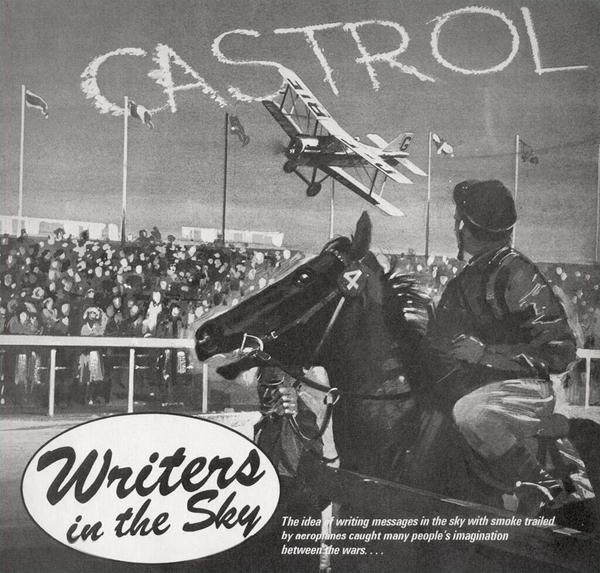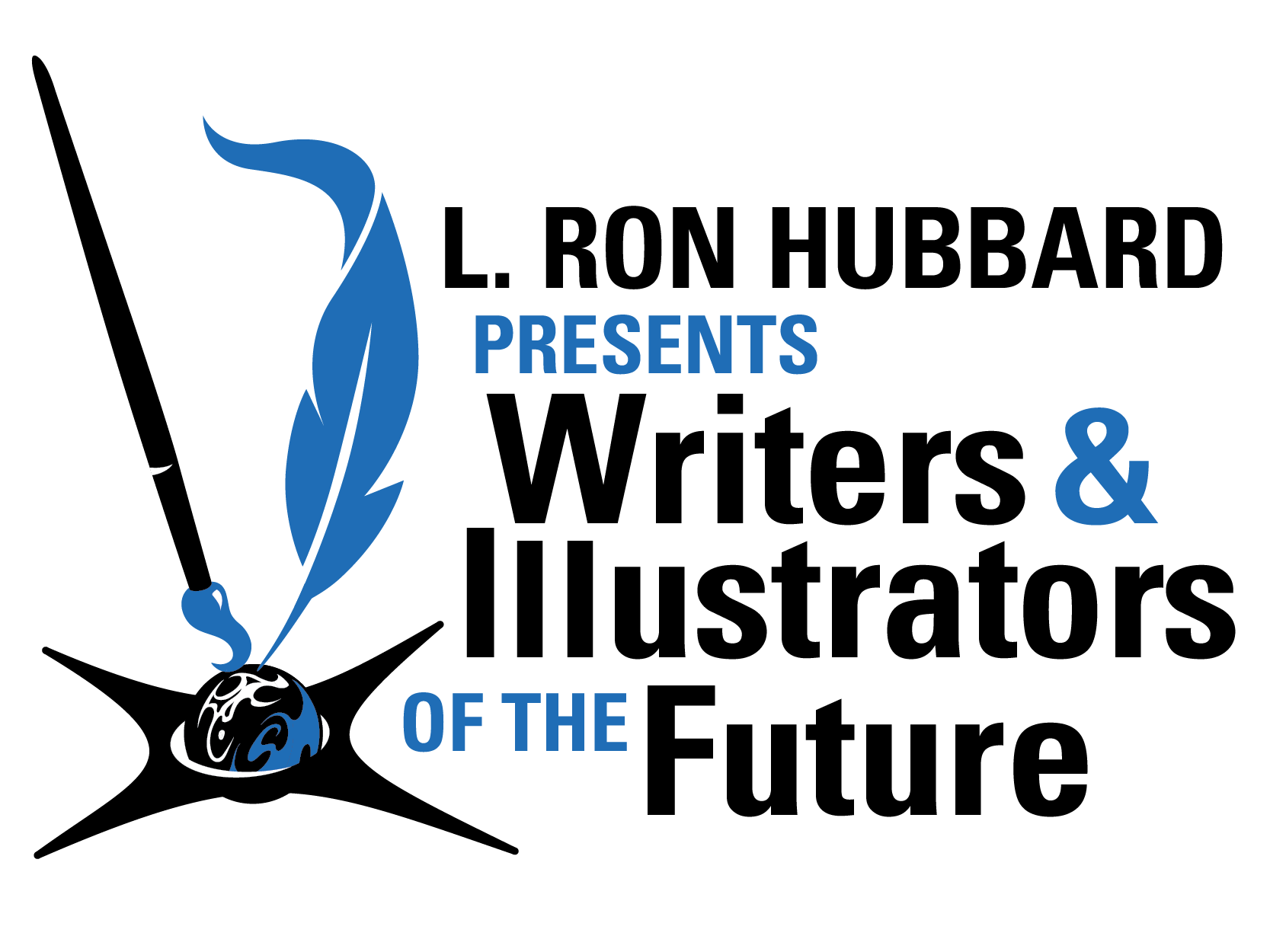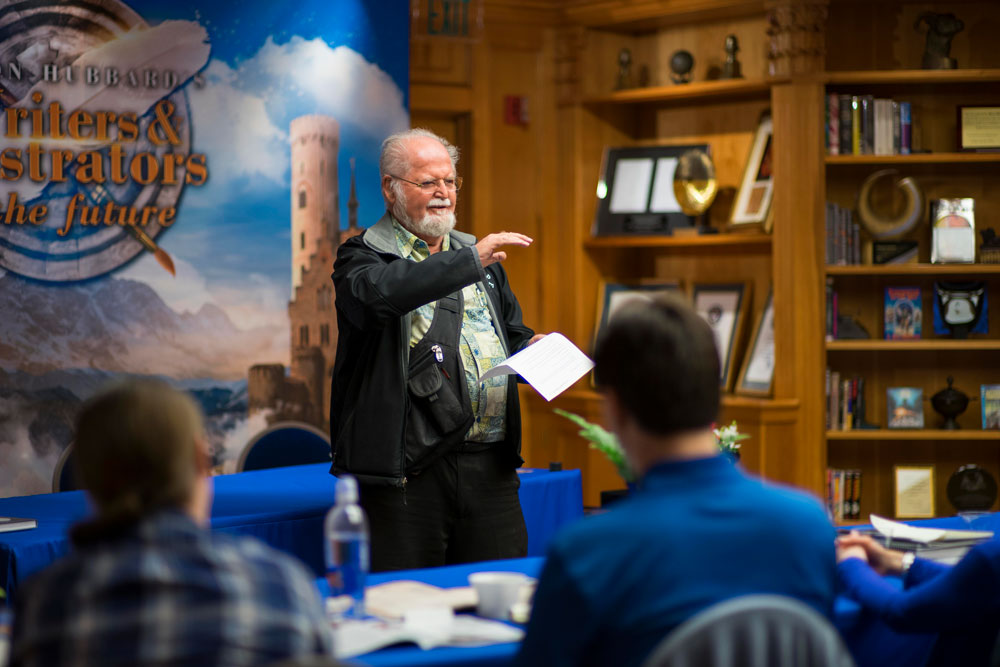Science fiction is the herald of possibility: How fantastic fiction has become science fact.
Science fiction—earlier termed fantastic fiction and later speculative fiction for its probing, multi-sided search of the world of “What If?”—has anticipated major developments in science and technology for decades.
Concepts now gaining widespread scientific recognition—ranging from microchip implants, robot drones and teleportation to the existence of other planets at the rim of the observable universe—were initially conceived of and written about in short stories and novels decades ago by science fiction writers such as Philip K. Dick, Robert Heinlein, L. Ron Hubbard, Jules Verne and H.G. Wells, to name a few. To the general reading public, these were good books to read. But to aspiring scientists, engineers and astronauts, such fantastic fiction was the fodder of dreams.

Castrol created the world’s first skywriting advertisement at the Epsom Derby in 1929.
In 1889, Jules Verne wrote his short story, “In the Year 2889,” where he predicted skywriting, which became fact in 1915 and began being used commercially in 1929. He also predicted video chatting which became fact in 1964.
In 1903, H.G. Wells wrote his short story “The Land Ironclads” where he predicted tanks that became fact in 1916.

The first official photograph taken of a Mark I Tank going into action, at the Battle of Flers-Courcelette, 15th September 1916. The man shown is wearing a leather tank helmet. Copyright: © IWM.
In 1911, Hugo Gernsback predicted radar and solar calculators in his short story “Ralph 124C 41+.” Radar became science fact in 1935 and solar calculators became fact in 1978.
And there are the science fiction stories that are only now becoming science fact.
In 1897, H.G. Wells, in his story The Invisible Man, originally serialized in Pearson’s Weekly, predicted making a person invisible. Only recently has this started to become science fact as in this video
In 1930, take the instance of Charles W. Diffin with his story “The Power and the Glory” where ray guns were postulated. While we don’t have “ray guns” per se, laser cannons do exist which you can see in this video.
In 1949, L. Ron Hubbard’s “Conquest of Space,” is a series of short stories published which, told from the future looking back, reveal that space was finally conquered by heroic individuals through privatization of space flight and the incredible risks they took to accomplish it. This is only now becoming science fact with the likes of Elon Musk (SpaceX), Richard Branson (Virgin Galactic) and Jeff Bezos (Blue Origin).
And what of the future?
That remains to be seen. But what we can say is that it will still be the inspiration from great books to be read by writers of the future.
Keynote speaker for the 2015 Writers of the Future Awards Ceremony, William Pomerantz, Vice President Special Projects Virgin Galactic, spoke to the annual winners about how science fiction provided his initial vision and it was again science fiction that enabled him to persevere in the realization of his dream of space flight. He stated, “I owe a huge debt to you and to those who have come before you. It was through science fiction that I learned that optimism, and through science fiction that I reclaimed it rather than falling victim to that jaded skepticism of our modern world.”
Want to discover what fantastic fiction is inspiring tomorrow’s science fact?
For more information on science fiction, fantasy and those who create it sign up for our newsletter HERE.
Other articles and resources you may be interested in:
Gift Ideas: Best Sci-Fi Book Recommendations
Sci-Fi Technology: Teleporters
Sci-Fi Weaponry: Laser Guns to Planet Busters—How do they measure up?




This is a fantastic blog. There is a lot of very interesting information in this one. By the way, how do I buy Writers of the Future Volume 33.
Thank you Kim. You can find it on Amazon.com or by going to GalaxyPress.com to get it.
Great list but…
What about Asimov!?!? I think we could make an argument that his contributions dwarfed most other writers.
I couldn’t resist commenting. Very well written!
php patterns